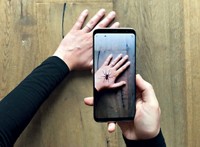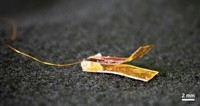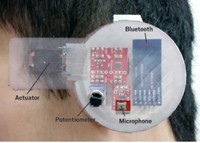Advertisement
Grab your lab coat. Let's get started
Welcome!
Welcome!
Create an account below to get 6 C&EN articles per month, receive newsletters and more - all free.
It seems this is your first time logging in online. Please enter the following information to continue.
As an ACS member you automatically get access to this site. All we need is few more details to create your reading experience.
Not you? Sign in with a different account.
Not you? Sign in with a different account.
ERROR 1
ERROR 1
ERROR 2
ERROR 2
ERROR 2
ERROR 2
ERROR 2
Password and Confirm password must match.
If you have an ACS member number, please enter it here so we can link this account to your membership. (optional)
ERROR 2
ACS values your privacy. By submitting your information, you are gaining access to C&EN and subscribing to our weekly newsletter. We use the information you provide to make your reading experience better, and we will never sell your data to third party members.
Analytical Chemistry
Newscripts
Problem solving in the 21st century: pedestrian protection and mobile phone retrieval
by Jyllian Kemsley
June 6, 2016
| A version of this story appeared in
Volume 94, Issue 23
Sticking to cars

Pedestrians struck by cars might find themselves glued to their automobile assailants in a few years, if a patent recently awarded to Google turns into a real product.
The concept described in U.S. Patent No. 9340178 is for an adhesive layer to be applied to the front end of a vehicle, which might include a conventional or self-driving automobile or “a truck, bus, van, semi-trailer truck, motorcycle, golf cart, ATV, off-road vehicle, or farm vehicle, as well as a carrier that rides on a track such as a rollercoaster, trolley, tram, or train car.”
The adhesive layer would be covered by a coating that would break on impact to expose the adhesive. Whatever broke the coating would then stick to the front of the vehicle. The goal is to protect pedestrians from injuries they might sustain in additional impacts with the road or other objects if thrown from the vehicle after initial impact.
But for a patent titled “Adhesive Vehicle Front End for Mitigation of Secondary Pedestrian Impact,” it is remarkably short on information about the adhesive itself.
There is plenty about the mechanics of the vehicle, sensors the vehicle might include, and how the sensory information might be processed. For example, the patent states that the sensor system “may include a number of sensors configured to sense information” about the automobile’s environment. Such sensors include a Global Positioning System module, an inertial measurement unit, a radio detection and ranging (radar) unit, a laser range finder and/or light detection and ranging unit, a camera, and actuators “configured to modify a position and/or orientation of the sensors.”
But about the adhesive, this is as specific as the patent gets: “Ideally, the adhesive coating on the front portion of the vehicle may be activated on contact and will be able to adhere to the pedestrian nearly instantaneously.” And “it is also desirable to have the adhesive coating release after a short period of time to allow for the removal of the pedestrian from the vehicle.”
The patent appears to have been the work of a couple of mechanical engineers. The Newscripts gang suggests that Google involve a few chemists, too.
The call came from inside

Should you swallow your mobile phone, be warned that it might not come out as easily as it went down.
In an article in the International Journal of Surgery Case Reports, a team from Adelaide & Meath Hospital, in Dublin, describes its response to a case in which a 29-year-old man swallowed what appears to be a bar-style mobile phone with dimensions 68 x 23 x 11 mm (2016, DOI: 10.1016/j.ijscr.2016.03.043).
Eighteen hours after ingestion, the phone remained in the patient’s stomach. The hospital team attempted to retrieve the phone endoscopically by passing a camera and other tools down the patient’s throat and esophagus into his stomach. Unfortunately, “following failed attempts at endoscopic removal, using endoscopic snares, graspers, tripod forceps, and baskets, the endoscopic approach was abandoned,” the paper says. “The mobile phone could not be aligned correctly to allow for a safe retrieval while limiting the potential harm to the esophagus.”
The team wound up removing the phone surgically, going through the patient’s abdomen to make a 30- to 40-mm incision in the patient’s stomach. Seven days later, he was discharged from the hospital.
In the future, the hospital team recommends that physicians faced with a swallowed phone get consent for both endoscopy and surgery and have a surgeon available so that if endoscopy fails, the patient doesn’t need to be roused between procedures. There is no word on whether the phone still worked after a day in a stomach, although it was sent for forensic examination, presumably because the patient—a prisoner—wasn’t supposed to have it.
Jyllian Kemsley wrote this week’s column. Please send comments and suggestions to newscripts@acs.org.





Join the conversation
Contact the reporter
Submit a Letter to the Editor for publication
Engage with us on Twitter